- Catalog of Sightings/
- Arthropods/
- Insects/
- Narrow-waisted Wasps, Ants, and Bees/
- Ants, Bees, and Stinging Wasps/
- Ants/
Black-backed meadow ant
species of family “Ants“
1 species
Formica pratensis is a species of ant that is divided into subspecies. It can reach a length of 4.5-9.5 mm in workers and queens can reach a size of 9.5-11.3 mm. The thorax is reddish and the abdomen and head are black or dark brown. Their nests are built with grasses, pine needles, and straw and can be up to a meter in diameter. This species can be found in various countries in Europe and is extinct in the UK. It is characteristic of rough alpine pastures, dry heathland, meadows, and roadsides.

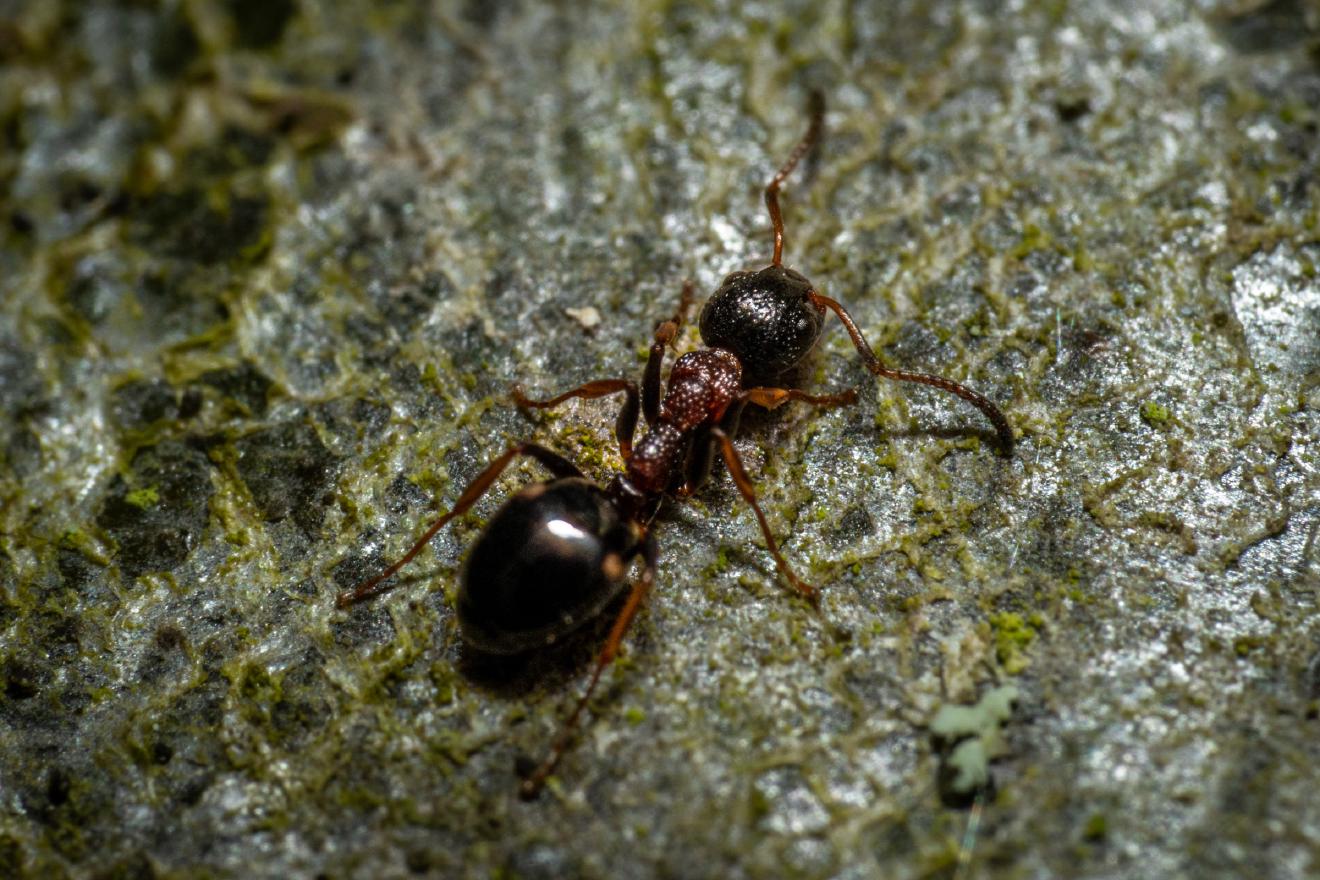
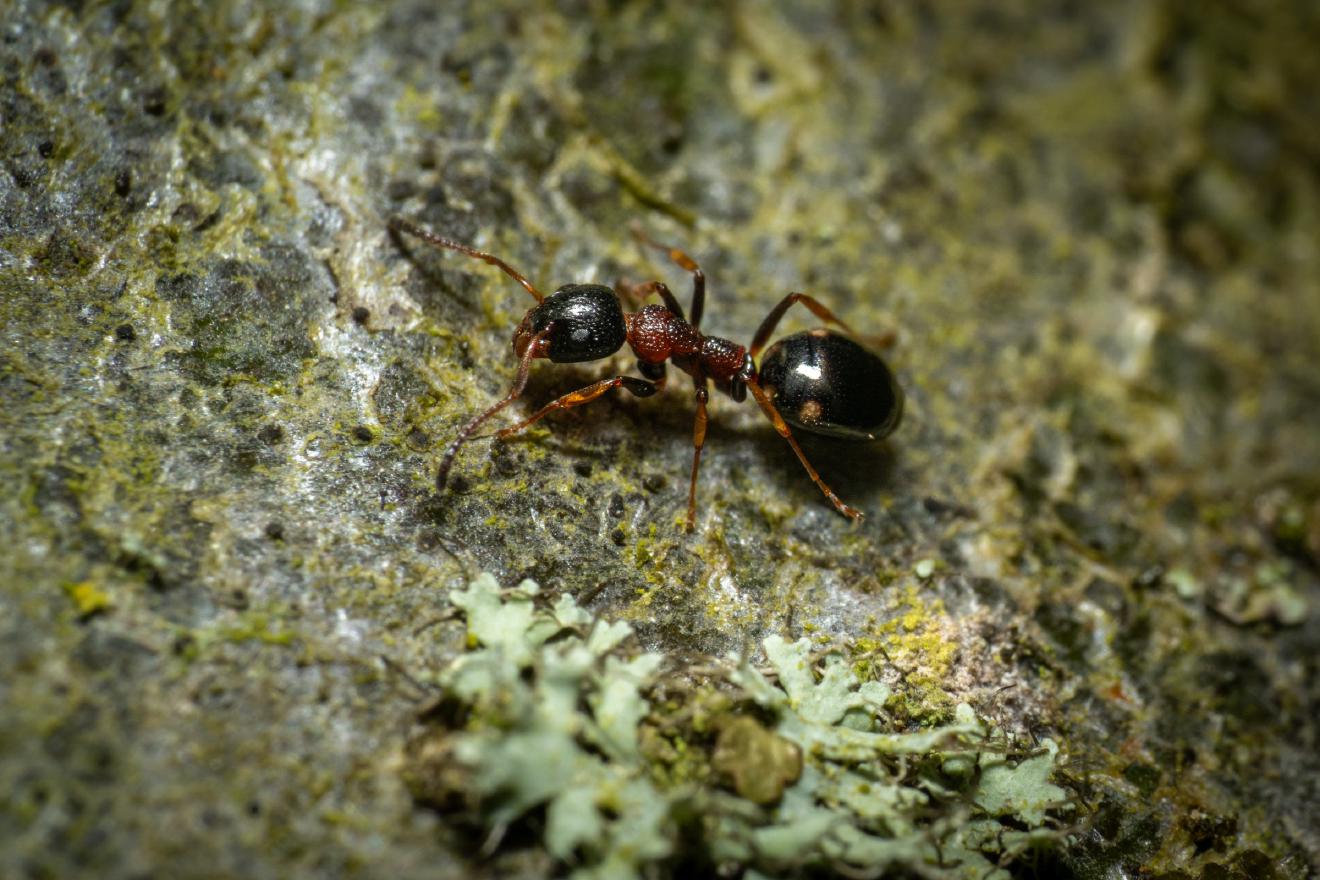
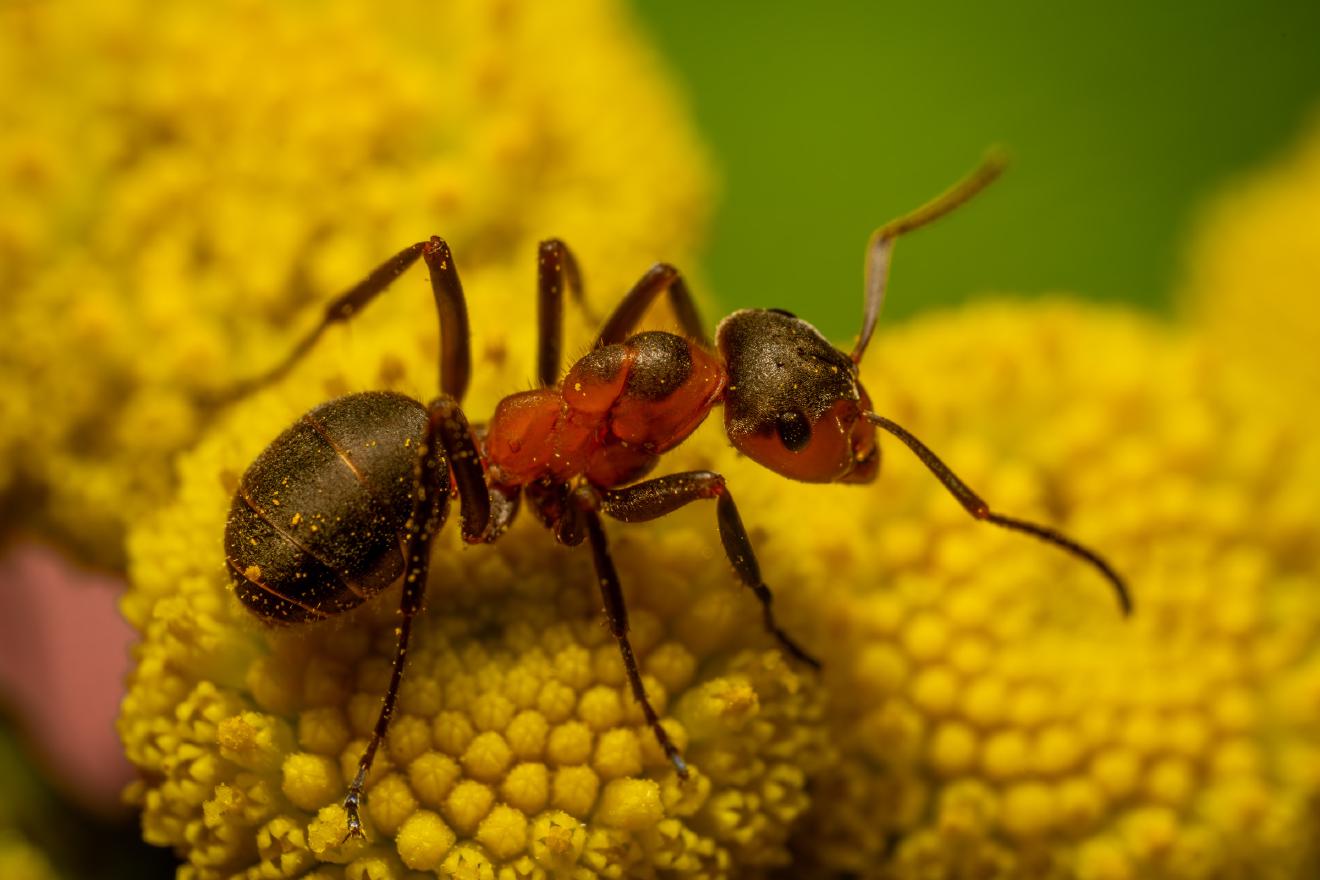
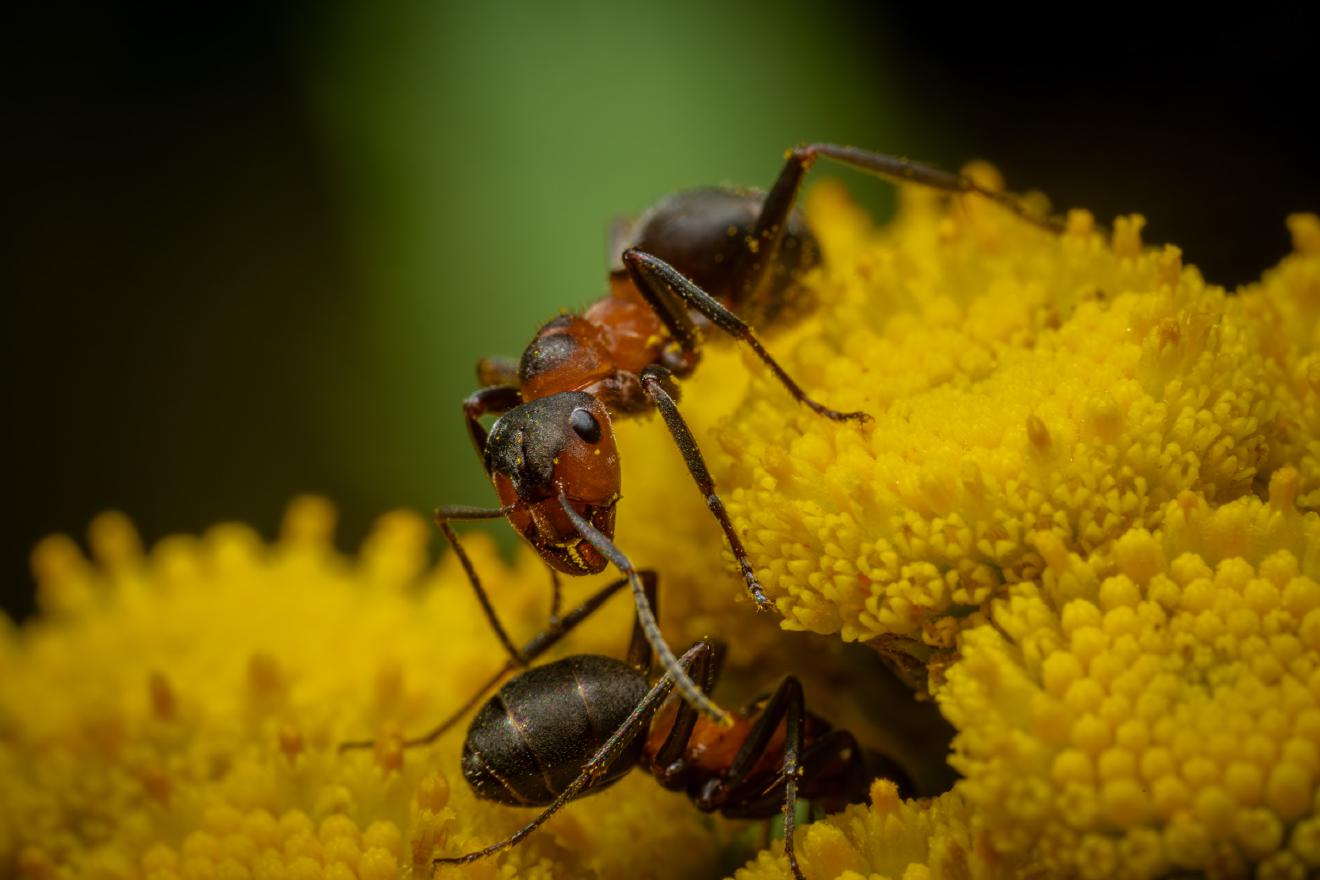
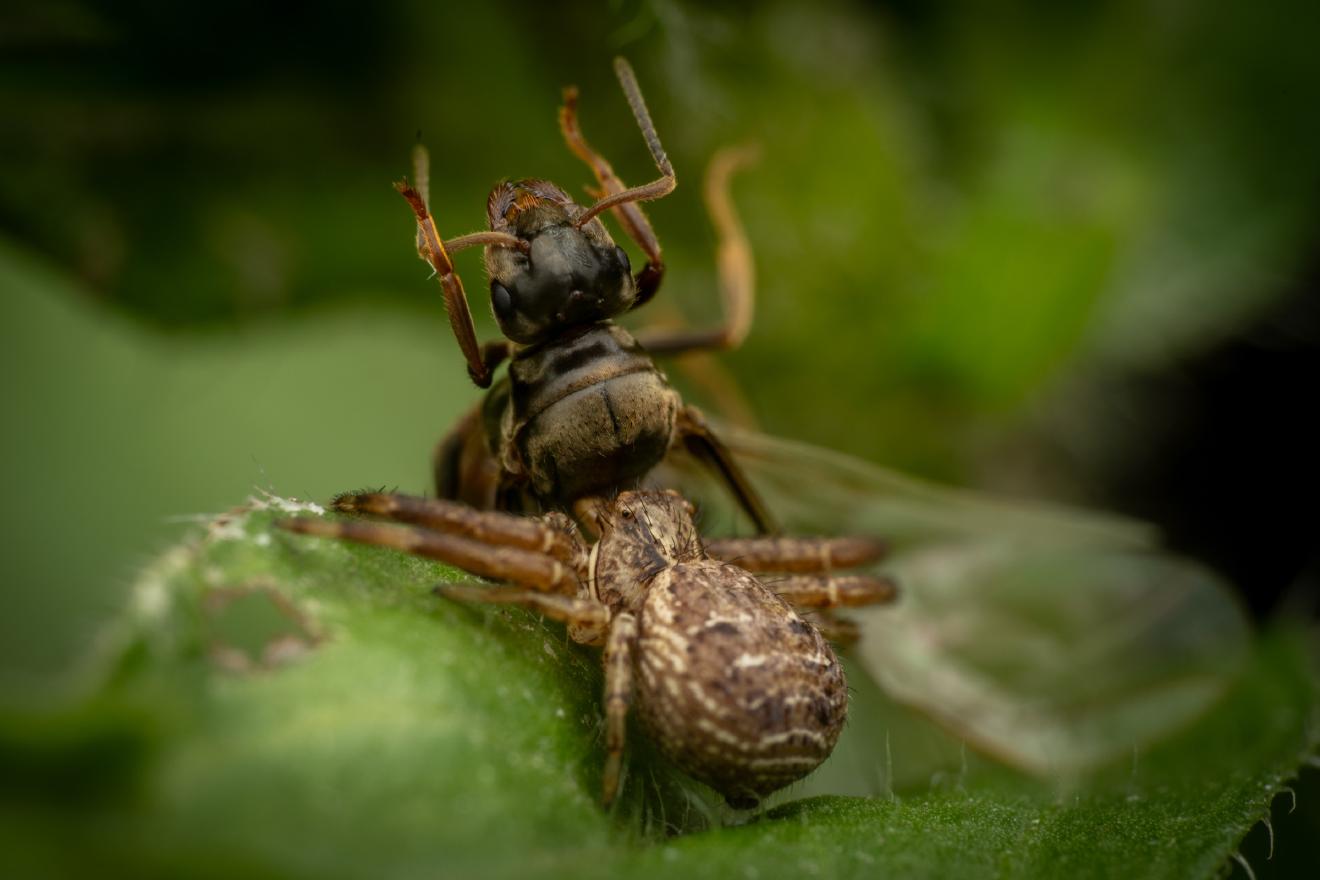
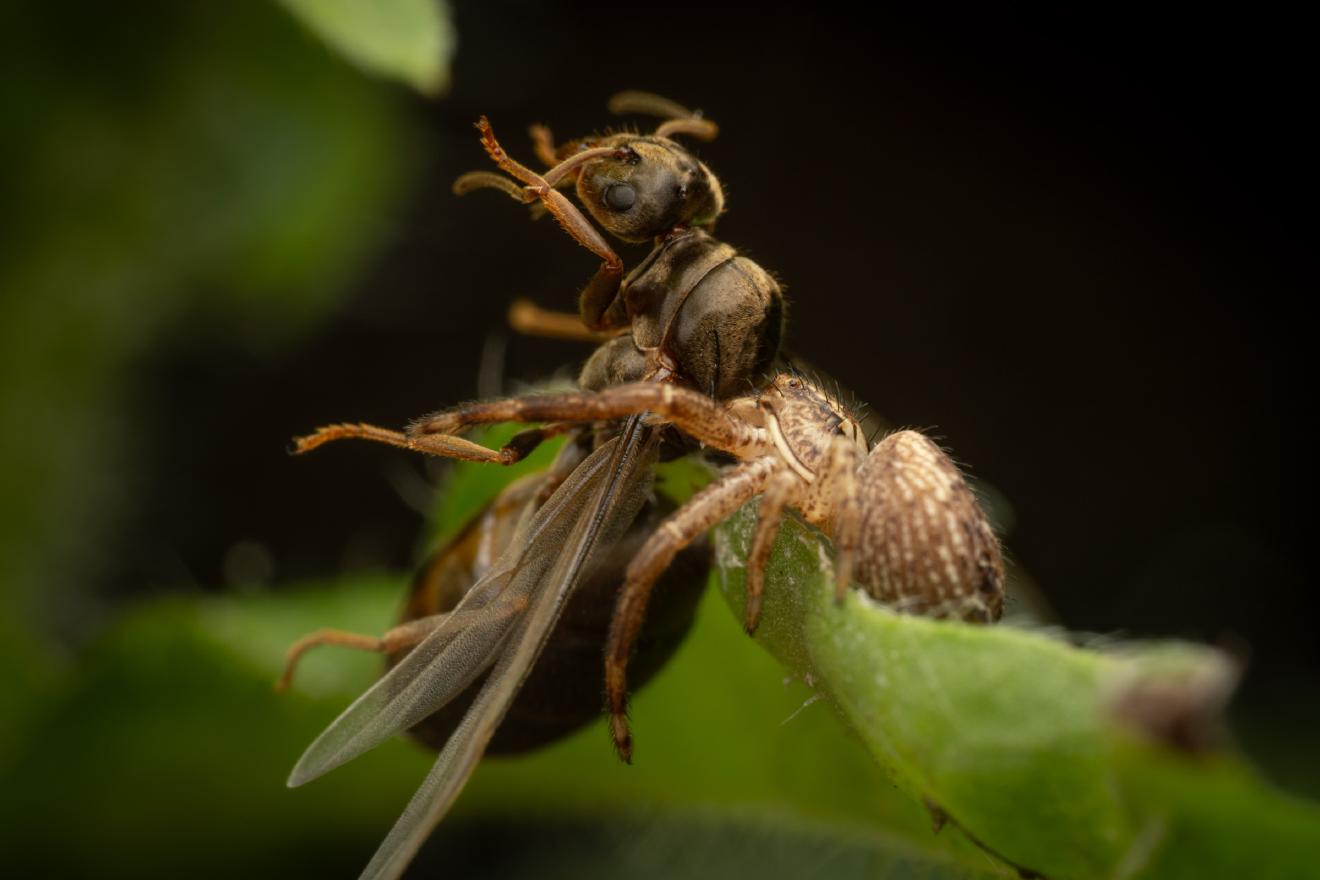
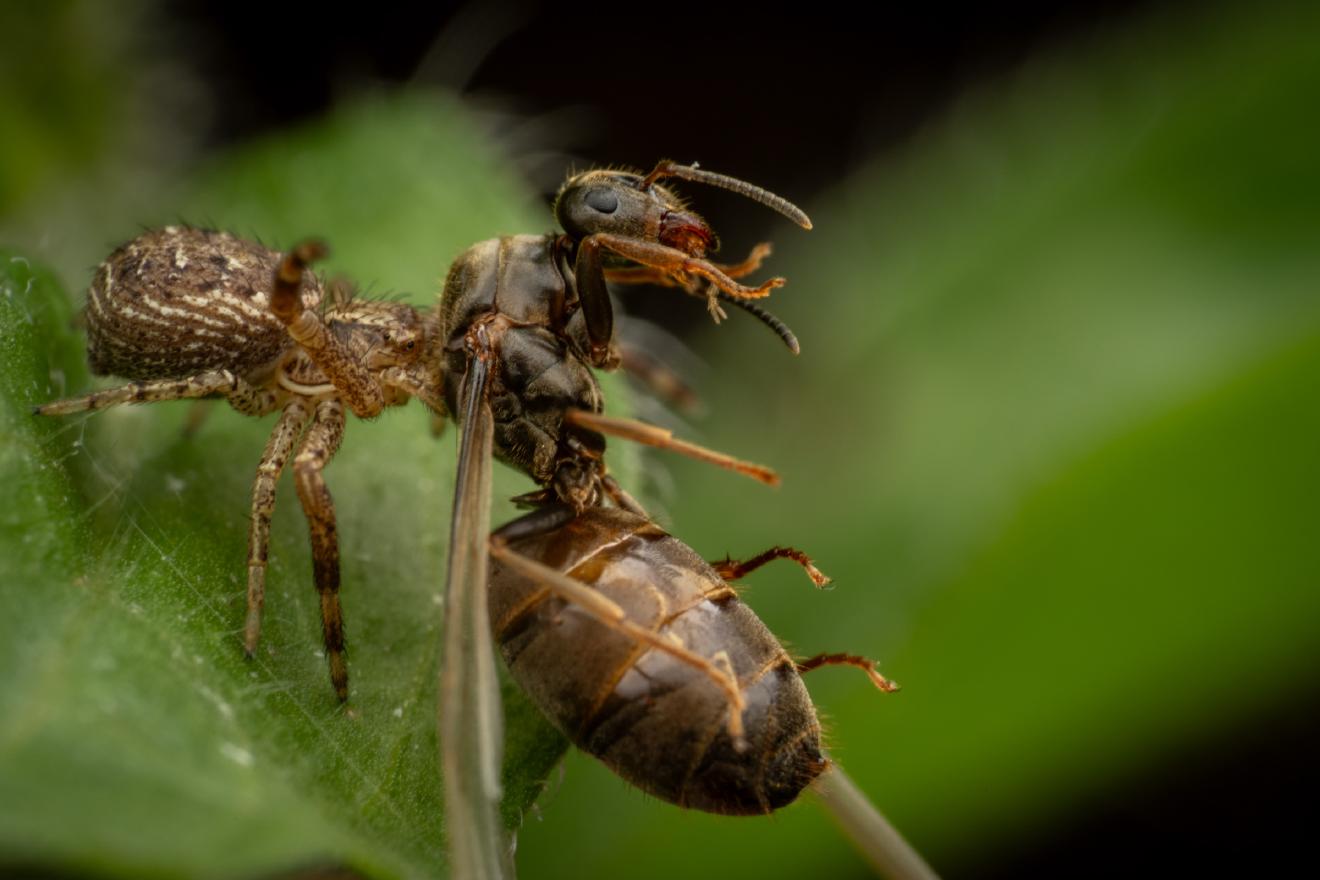
Systematic#
Formica pratensis is divided into these subspecies:
Formica pratensis nuda Ruzsky, 1926 Formica pratensis pratensis Retzius, 1783 Formica pratensis starkei Betrem, 1960Some morphs have previously been named as their own species, like F. nigropratensis Betrem 1962 and Formica nigricans Emery in 1909, but are now considered junior synonymes of Formica pratensis.
Description#
F. pratensis can reach a length of 4.5–9.5 mm (0.18–0.37 in) in workers, slightly larger than in other species such as the more common southern wood ant F. rufa or F. polyctena. Queens reach a size of 9.5–11.3 mm (0.37–0.44 in). The thorax is mainly reddish, while the abdomen and the top of the head are black or dark brown. Generally, this large ant is much darker than other species of wood ants. Their whole bodies are covered with fine hairs. Two large deep black patch are present on the pronotum and mesonotum. The legs, antennae, and the well-developed mouthparts are reddish or dark brown.
Life cycle#
Their nests are built from grasses, pine needles and straw, and can reach up to a meter in diameter. One nest can have either a single queen or very few. Winged males and females can be present in nests from late April to September, as this species reflects the production of two separate generations. The first generation of ants develop from late April to mid-July, the second generation from mid-August to late September. This species mainly feeds on insects and other small animals, and collects honeydew from aphids.
Distribution#
This species can be found in Austria, Belgium, Bulgaria, Czech Republic, Estonia, Finland, France, Georgia, Germany, Guernsey, Hungary, Italy, Latvia, Lithuania, Luxembourg, Moldova, Netherlands, Norway, Poland, Romania, Russia, Serbia and Montenegro, Slovakia, Spain, Sweden, Switzerland, Turkey, and the Ukraine. It is also present in the East Palearctic realm and in the Near East. The species is extinct in the UK since 1988. In forests weakened by pollution and acid rain in central Europe, red wood ant populations are often endangered for little known reasons which in turn causes further imbalances in predator-prey dynamics and the ecosystem.
Habitat#
This species is characteristic of rough alpine pastures, up to a height of about 1,500 meters. It can be found in dry heathland, meadows and roadsides.
References#
Bolton, B. 1995. A New General Catalogue of the Ants of the World. Cambridge, Massachusetts: Harvard University Press Bolton, B.; Alpert, G.; Ward, P. S.; Naskrecki, P. 2007. Bolton’s Catalogue of ants of the world: 1758-2005. Cambridge, Massachusetts: Harvard University Press, CD-ROM
External links#
Data related to Formica pratensis at Wikispecies Media related to Formica pratensis at Wikimedia Commons
Formica pratensis is a species of ant that is divided into subspecies. It can reach a length of 4.5-9.5 mm in workers and queens can reach a size of 9.5-11.3 mm. The thorax is reddish and the abdomen and head are black or dark brown. Their nests are built with grasses, pine needles, and straw and can be up to a meter in diameter. This species can be found in various countries in Europe and is extinct in the UK. It is characteristic of rough alpine pastures, dry heathland, meadows, and roadsides.
Ancestry Graph
Further Information
Copyright

